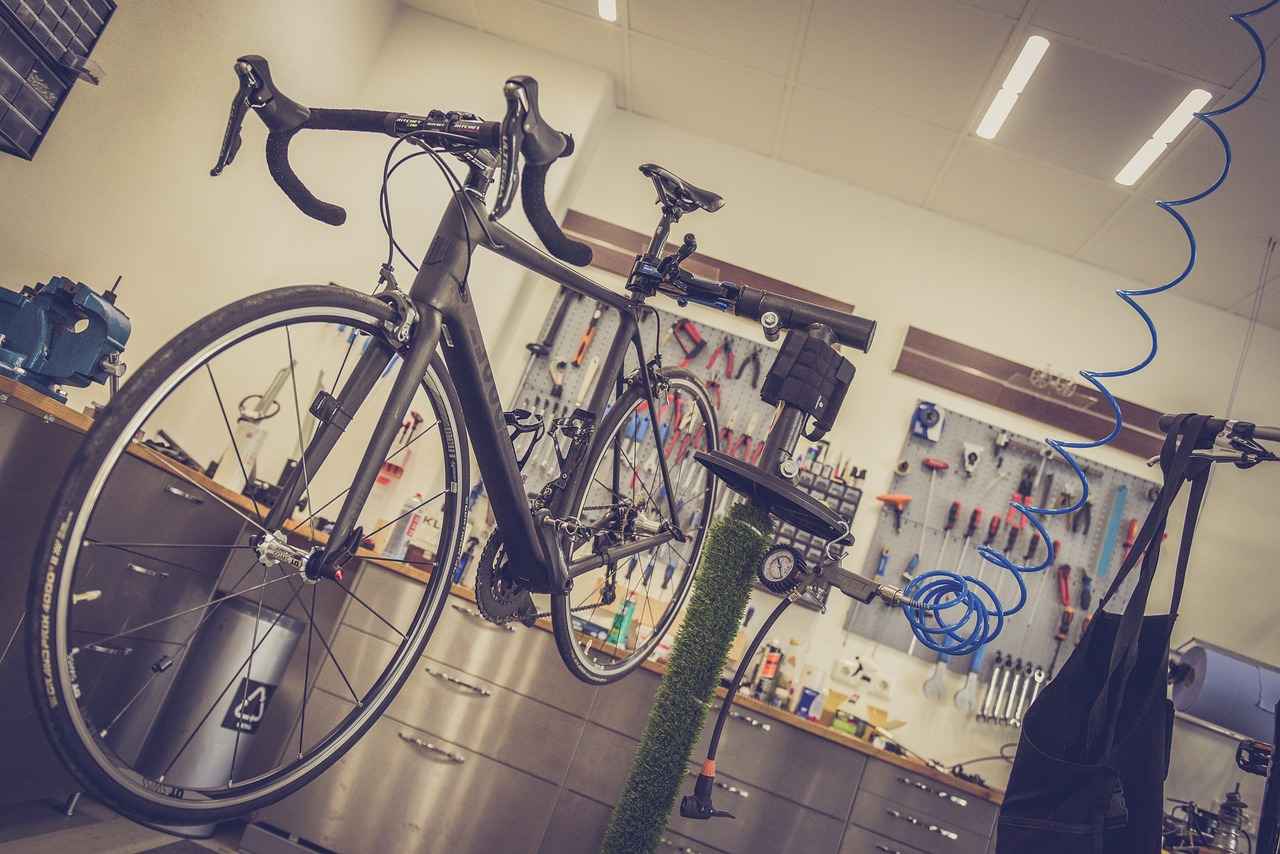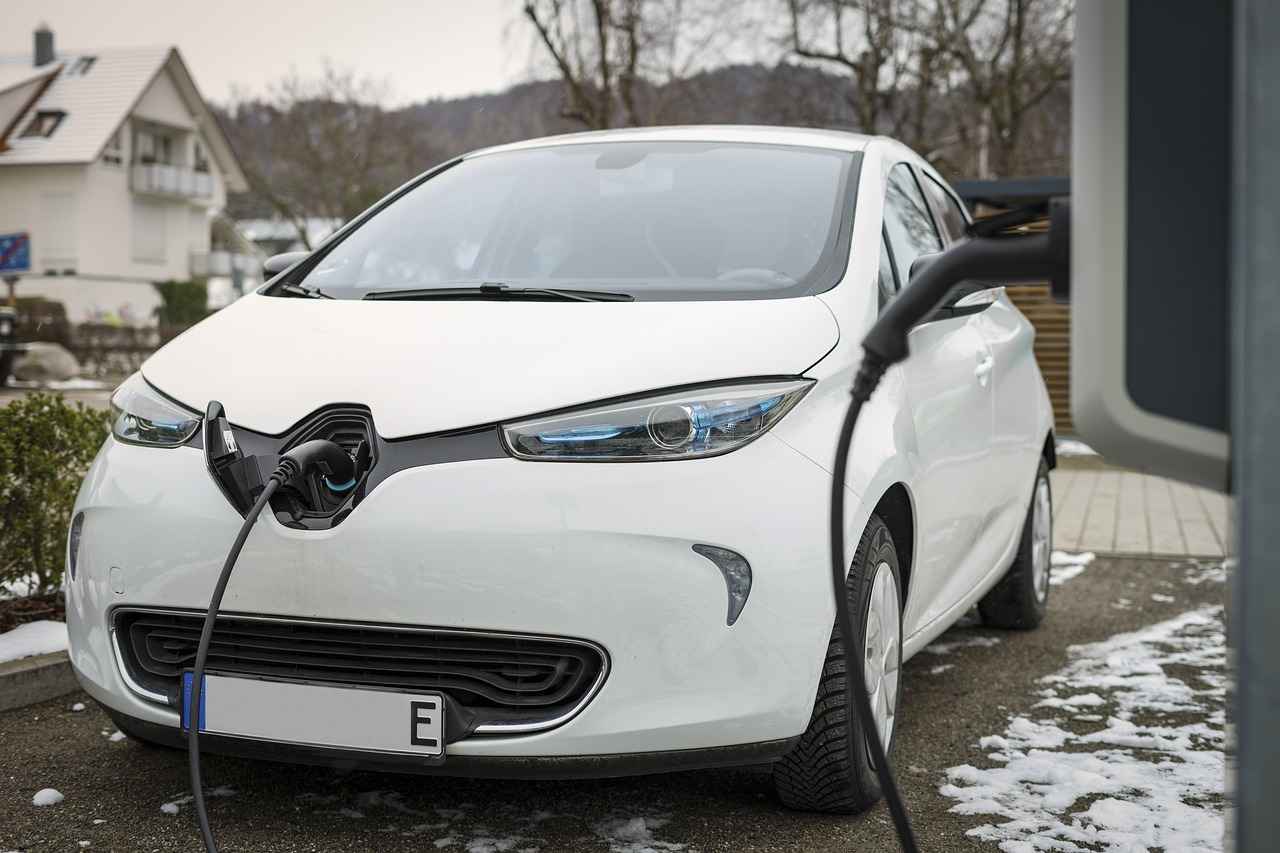This article provides essential maintenance tips and practices to extend the lifespan of your electric bike, ensuring optimal performance and reliability for years to come.
Understanding Electric Bike Components
A solid grasp of the various components of an electric bike is crucial for effective maintenance. Regular attention to the following key parts will help keep your bike running smoothly:
- Battery
- Motor
- Brakes
- Tires
Regular Battery Care
The battery is the heart of your electric bike. Proper care can maximize its lifespan and performance. Here are some tips:
- Charging Best Practices: Always charge your battery after each ride and avoid letting it deplete completely.
- Optimal Charging Frequency: Charge your battery regularly based on your riding habits to maintain its health.
- Avoiding Deep Discharge: Keeping your battery charged can prevent significant damage.
Storage Tips for Longevity
Proper storage during off-seasons can prevent various issues. Store your bike in a cool, dry place and ensure the battery is charged to about 50%.
Regular Cleaning and Maintenance
Keeping your electric bike clean is essential for its performance and longevity. Follow these steps:
- Cleaning the Frame and Components: Use mild soap and water to clean the frame, avoiding harsh chemicals.
- Lubricating Moving Parts: Regularly lubricate the chain and gears to ensure smooth operation.
Tire Maintenance Tips
Healthy tires are vital for performance and safety. Ensure you:
- Check Tire Pressure: Maintain the recommended tire pressure for optimal performance.
- Inspect Tire Tread: Regularly check for wear and replace tires when necessary.
Understanding Software Updates
Many electric bikes come with updatable software. Keeping it current can enhance functionality:
- Benefits of Software Updates: Regular updates can improve performance and add new features.
- How to Update Your Bike’s Software: Follow the manufacturer’s instructions for a smooth update process.
When to Seek Professional Help
While many maintenance tasks can be done at home, some issues require professional attention. Look for signs such as:
- Unusual noises from the motor
- Battery not holding charge
Conclusion: Keeping Your Electric Bike in Top Shape
Regular maintenance is key to ensuring the longevity of your electric bike. By following these tips, you can enjoy a reliable and efficient ride for years to come.

Understanding Electric Bike Components
A solid understanding of the various components of an electric bike is crucial for effective maintenance. By familiarizing yourself with these key parts, you can ensure that your bike remains in optimal condition and continues to perform at its best. This section covers the essential components that require regular attention to keep your bike running smoothly.
- Battery: The heart of your electric bike, the battery provides the necessary power for the motor. Regularly checking its health and ensuring proper charging practices can significantly extend its lifespan.
- Motor: This component drives the bike forward. Understanding its type and specifications can help you troubleshoot issues and maintain performance.
- Controller: Acting as the brain of your electric bike, the controller manages power distribution from the battery to the motor. Keeping it free from dirt and ensuring connections are secure is essential.
- Brakes: Safety is paramount, and regular inspection of your braking system is crucial. Whether mechanical or hydraulic, ensuring they function properly can prevent accidents.
- Tires: The tires are your bike’s only contact with the ground. Regularly checking their pressure and tread can enhance your riding experience and safety.
- Frame: A sturdy frame is vital for the overall integrity of the bike. Regularly inspecting for cracks or damage can prevent future issues.
By regularly maintaining these components, you can significantly enhance the longevity and performance of your electric bike. Each part plays a vital role, and giving them the attention they deserve will ensure that your riding experience remains enjoyable and trouble-free.
In conclusion, understanding the various components of your electric bike is not just beneficial; it is essential. By taking the time to learn about and care for these parts, you can ensure a smooth and reliable ride for years to come.

Regular Battery Care
is essential for maintaining the performance and longevity of your electric bike. The battery acts as the heart of your bike, powering your rides and ensuring a smooth experience. To maximize its lifespan and efficiency, it is crucial to adopt proper charging, storage, and maintenance practices.
Charging your electric bike’s battery correctly can significantly enhance its lifespan. Here are some best practices to follow:
- Use the Right Charger: Always use the charger that comes with your bike or a compatible one recommended by the manufacturer.
- Charge at the Right Time: Avoid charging your battery immediately after a ride. Allow it to cool down for about 30 minutes before plugging it in.
- Monitor Charging Duration: Overcharging can damage your battery. Typically, charging for 3-6 hours is sufficient, depending on the battery size.
Finding the right balance in charging frequency is crucial. If you regularly use your bike, aim to charge it after every ride. However, if you ride less frequently, try to keep the battery charged between 20% and 80% to avoid deep discharge.
Deep discharging, or letting your battery drop below 20%, can drastically reduce its lifespan. To prevent this, regularly check the battery level and charge it before it gets too low. Additionally, consider investing in a battery management system that alerts you when your battery is running low.
When not in use, proper storage of your electric bike and its battery is vital:
- Store in a Cool, Dry Place: Avoid exposing the battery to extreme temperatures.
- Charge Before Storing: Ideally, store your battery at around 50% charge for optimal health.
- Check Periodically: If stored for an extended period, check the battery every few weeks and recharge if necessary.
By following these regular battery care practices, you can significantly enhance the performance and lifespan of your electric bike, ensuring that it remains a reliable mode of transportation for years to come.
Charging Best Practices
When it comes to maintaining your electric bike’s battery, understanding the best practices for charging is essential. Proper charging not only prevents damage but also ensures the longevity of your battery. Here are some key points to consider:
- Know When to Charge: It’s crucial to charge your electric bike’s battery at the right time. Ideally, you should charge it when it drops to around 20-30% of its capacity. Avoid letting it discharge completely, as this can lead to permanent damage.
- Optimal Charging Duration: Most electric bike batteries take between 3 to 6 hours to charge fully. Always refer to the manufacturer’s guidelines for specific recommendations. Overcharging can lead to overheating and reduced battery life.
- Use the Right Charger: Always use the charger that came with your bike or a manufacturer-approved alternative. Using an incorrect charger can lead to electrical issues or battery failure.
- Avoid Extreme Temperatures: Charging your battery in extreme heat or cold can negatively impact its performance. Aim to charge your bike in a temperature-controlled environment, ideally between 50°F and 86°F (10°C to 30°C).
- Regular Charging Schedule: Establish a regular charging routine based on your riding habits. If you ride daily, consider charging every night. For infrequent riders, charging every few weeks can help maintain battery health.
By following these best practices, you can significantly enhance the lifespan and efficiency of your electric bike’s battery. Proper care ensures that your bike remains reliable and ready for your next adventure.
Optimal Charging Frequency
Finding the right balance in charging frequency is essential to enhance the longevity of your electric bike’s battery. Understanding how often to charge based on your riding habits can make a significant difference in battery performance and lifespan.
For daily commuters, charging your electric bike nightly is typically recommended. This practice ensures that your battery is always ready for your next ride, providing consistent performance. However, if your commute is shorter, you may not need to charge it every day. In such cases, charging every other day could be sufficient, allowing the battery to maintain a healthy charge cycle.
For those who ride less frequently, it’s crucial to avoid letting your battery drop to extremely low levels. A good rule of thumb is to charge your battery when it reaches around 20-30% of its capacity. This practice helps prevent deep discharge, which can significantly shorten battery life.
Additionally, consider your riding intensity. If you often ride in high power modes or tackle steep hills, your battery will deplete faster, necessitating more frequent charges. Conversely, if you ride in eco mode or on flat terrain, you can extend the time between charges.
Moreover, environmental factors such as temperature can also affect battery performance. In colder temperatures, batteries may not hold their charge as well, so you might need to charge them more frequently during winter months.
In conclusion, finding the optimal charging frequency involves understanding your riding habits, the conditions in which you ride, and the specific needs of your battery. By following these guidelines, you can enhance your electric bike’s battery life and ensure reliable performance.
Avoiding Deep Discharge
Deep discharging your electric bike’s battery can drastically reduce its lifespan, leading to costly replacements and diminished performance. Understanding the importance of maintaining an optimal charge level is essential for every electric bike owner. In this section, we will explore the reasons why deep discharge is detrimental and provide practical tips to help you avoid such scenarios.
Understanding Deep Discharge
Deep discharge occurs when a battery is drained to a very low voltage, often below the manufacturer-recommended level. This condition can cause irreversible damage to the battery cells, resulting in reduced capacity and a shorter overall lifespan. Regularly allowing your battery to reach these low levels can lead to performance issues and increased charging times.
Importance of Keeping Your Battery Charged
- Optimal Performance: A well-charged battery ensures that your electric bike operates efficiently, providing the power needed for smooth rides.
- Extended Lifespan: Keeping your battery charged within the recommended range helps maintain its health and longevity.
- Reliable Range: A fully charged battery allows you to travel longer distances without the fear of running out of power.
Tips for Avoiding Deep Discharge
- Monitor Battery Levels: Regularly check your battery’s charge level and recharge it before it drops too low.
- Set Reminders: Use your smartphone or a calendar to set reminders for charging your battery regularly.
- Avoid Long Periods of Inactivity: If you don’t plan on using your bike for an extended period, charge the battery to about 50% before storing it.
- Invest in a Quality Charger: Use a charger that is compatible with your battery type to avoid overcharging or undercharging.
By following these tips and understanding the significance of keeping your battery charged, you can ensure that your electric bike remains in peak condition, providing you with reliable performance for years to come.
Storage Tips for Longevity
Proper storage of your electric bike is crucial, especially during the off-seasons, to prevent various issues that can arise from neglect. By following best practices for storing your bike and battery, you can ensure that your investment remains in excellent condition and performs optimally for years to come.
- Clean Before Storage: Always clean your electric bike thoroughly before storing it. Remove any dirt, grime, or moisture that could lead to corrosion. Use a gentle cleaner and a soft cloth to wipe down the frame and components.
- Battery Care: The battery is the heart of your electric bike. Store it in a cool, dry place, ideally between 20°C and 25°C (68°F to 77°F). Ensure the battery is charged to about 50% before storage to prevent deep discharge, which can damage the battery cells.
- Protect from Temperature Extremes: Avoid storing your bike in places with extreme temperatures, such as attics or garages that can become excessively hot or cold. Temperature fluctuations can affect the battery and other components.
- Use a Bike Cover: If storing your bike outside, invest in a quality bike cover to protect it from the elements. A cover helps shield your bike from rain, snow, and UV rays, which can cause fading and wear.
- Check Tire Pressure: Before storage, inflate your tires to the recommended pressure to prevent flat spots from developing. Check the tire pressure periodically during storage and top off as necessary.
- Periodic Maintenance Checks: Even while in storage, it’s essential to perform periodic checks on your electric bike. Inspect the brakes, gears, and battery health to ensure everything remains in working order.
By adhering to these storage tips, you can significantly enhance the longevity of your electric bike, ensuring that it remains ready for your next adventure.

Regular Cleaning and Maintenance
is a vital aspect of ensuring your electric bike remains in top condition. A clean bike not only looks good but also functions better and lasts longer. This section will guide you through effective cleaning processes and maintenance routines that are essential for your electric bike’s performance and longevity.
To maintain your electric bike, it is important to establish a regular cleaning schedule. Here are some key steps to follow:
- Gather Your Cleaning Supplies: You will need a soft cloth, a sponge, a bucket of warm water, mild soap, a brush, and a degreaser for the drivetrain.
- Cleaning the Frame: Use a sponge or soft cloth dipped in soapy water to gently wipe down the frame. Avoid using harsh chemicals that could damage the paint.
- Cleaning the Drivetrain: Apply a degreaser to the chain and gears, allowing it to sit for a few minutes. Then, scrub with a brush before rinsing thoroughly.
- Wheels and Tires: Clean your wheels and tires by removing dirt and debris. Inspect for any damage or wear that might require attention.
- Drying: After cleaning, dry your bike with a soft cloth to prevent water spots and rust.
In addition to regular cleaning, maintenance routines are crucial. Here are some essential maintenance tasks:
- Check the Battery: Regularly inspect the battery for any signs of corrosion or damage. Clean the terminals if necessary.
- Inspect Brakes: Ensure that your brakes are functioning properly. Check the brake pads for wear and replace them if needed.
- Lubricate Moving Parts: Apply lubricant to the chain, gears, and any other moving parts to ensure smooth operation.
- Regular Inspections: Schedule periodic inspections to catch any potential issues early on.
By following these cleaning and maintenance guidelines, you can significantly enhance the performance and lifespan of your electric bike. A well-maintained bike not only provides a smoother ride but also ensures safety and reliability on the road.
Cleaning the Frame and Components
Maintaining the cleanliness of your electric bike is crucial for its longevity and performance. Regular cleaning not only enhances its aesthetic appeal but also prevents rust and wear on vital components. Below is a comprehensive, step-by-step guide to effectively clean your electric bike.
- Gather Your Supplies: Before you start, ensure you have the following items:
- Soft cloths or microfiber towels
- Bike-specific cleaning solution
- Soft brush or sponge
- Bucket of warm water
- Chain lubricant
- Protective gloves (optional)
- Preparation: Begin by moving your bike to a shaded area to avoid direct sunlight, which can dry the cleaning solution too quickly. Remove any accessories or bags from your bike.
- Cleaning the Frame:
- Using a soft cloth or sponge, apply the bike-specific cleaning solution to the frame, focusing on areas with dirt and debris.
- Gently scrub the frame with a soft brush to remove stubborn grime. Be careful around sensitive areas like the battery and electrical components.
- Rinse the frame with clean water to remove all cleaning solution.
- Dry the frame with a clean cloth to prevent water spots and rust.
- Cleaning the Components:
- Pay special attention to the chain, gears, and brakes. Use a degreaser for the chain, applying it generously.
- Scrub the chain with a brush to remove any built-up grime.
- Rinse with water and dry thoroughly before applying chain lubricant.
- Final Touches: After everything is clean and dry, check for any loose bolts or components. Lubricate the chain and other moving parts to ensure smooth operation.
By following these steps regularly, you can keep your electric bike in top shape, enhancing its performance and extending its lifespan. Remember, a clean bike is a happy bike!
Lubricating Moving Parts
is an essential aspect of maintaining your electric bike, ensuring that all components function smoothly and efficiently. Proper lubrication not only reduces friction but also extends the lifespan of various parts, making your riding experience more enjoyable.
When it comes to which parts to lubricate, focus on the following:
- Chain: The bike chain is one of the most critical components that require regular lubrication. A well-lubricated chain enhances shifting performance and prevents wear.
- Derailleurs: Both front and rear derailleurs should be lubricated to ensure smooth gear changes. This reduces the strain on the shifting mechanism.
- Brake Cables: Lubricating the brake cables helps maintain effective braking performance and prolongs cable life.
- Pivot Points: Any moving parts, such as brake levers and suspension pivots, should be lubricated to minimize wear and tear.
Now, let’s discuss the best products to use for lubrication:
| Product | Type | Best For |
|---|---|---|
| Wet Lubricant | Oil | Chain lubrication in wet conditions |
| Dry Lubricant | Aerosol | Chain lubrication in dry, dusty conditions |
| Grease | Paste | Pivot points and bearings |
In conclusion, regular lubrication of your electric bike’s moving parts is crucial for optimal performance and longevity. By focusing on the key components and using the right products, you can ensure a smooth and enjoyable riding experience. Don’t overlook this vital maintenance task, as it can save you time and money on repairs in the long run!

Tire Maintenance Tips
The health of your bike’s tires is crucial for both performance and safety. Proper tire maintenance ensures that your bike delivers optimal grip and longevity, allowing for a smooth and secure ride. Below are essential practices to keep your tires in top condition.
- Regular Tire Pressure Checks
Maintaining the correct tire pressure is vital for optimal performance. Under-inflated tires can lead to increased rolling resistance and reduced efficiency, while over-inflated tires can compromise grip and comfort. It is recommended to check your tire pressure at least once a week using a reliable pressure gauge. The ideal pressure range is usually marked on the tire sidewall.
- Inspecting Tire Tread
Regularly inspect the tread of your tires for signs of wear and tear. A well-maintained tread pattern enhances traction, especially in wet conditions. Look for uneven wear, cracks, or bald patches. If the tread depth is below the recommended level, it’s time to replace your tires to prevent accidents.
- Cleaning Tires
Keeping your tires clean not only improves their appearance but also extends their lifespan. Use a soft brush and mild soap to remove dirt and debris, followed by a thorough rinse. Avoid using harsh chemicals that can degrade the rubber material.
- Rotation and Alignment
Just like with car tires, rotating your bike tires can help ensure even wear. If you notice uneven wear patterns, consider having your bike’s alignment checked by a professional. Proper alignment can significantly enhance tire lifespan and performance.
- Storage Considerations
When storing your bike, especially for extended periods, ensure that the tires are not in contact with direct sunlight or extreme temperatures. This can cause the rubber to deteriorate. Consider using a bike cover or storing your bike indoors to protect the tires.
By following these tire maintenance tips, you can enhance your bike’s performance and safety, ensuring a reliable riding experience. Regular attention to your tires will not only improve your ride but also extend the life of your bike.
Checking Tire Pressure
is an essential aspect of maintaining your electric bike, impacting both performance and safety. Proper tire pressure ensures optimal grip on the road, enhances battery efficiency, and extends the lifespan of your tires. Here, we will guide you through the steps to check tire pressure effectively and provide recommendations for maintaining the ideal pressure levels.
Why Tire Pressure Matters
- Performance: Properly inflated tires improve handling and responsiveness, making your rides smoother and safer.
- Battery Efficiency: Correct tire pressure reduces rolling resistance, allowing your electric bike to use less energy and extend battery life.
- Tire Longevity: Maintaining the right pressure helps prevent uneven wear and tear, prolonging the life of your tires.
How to Check Tire Pressure
- Gather Your Tools: You will need a reliable tire pressure gauge and a pump.
- Remove Valve Cap: Unscrew the valve cap from the tire you want to check.
- Check Pressure: Press the tire pressure gauge onto the valve stem and read the measurement displayed.
- Compare with Recommended Levels: Refer to your electric bike’s manual or the sticker on the frame for the recommended tire pressure, usually measured in PSI (pounds per square inch).
- Inflate if Necessary: If the pressure is below the recommended level, use a pump to inflate the tire to the correct PSI.
- Recheck Pressure: After inflating, check the pressure again to ensure it is accurate.
- Replace Valve Cap: Once done, screw the valve cap back on to protect the valve from dirt and debris.
Recommended Tire Pressure Levels
For most electric bikes, the ideal tire pressure ranges from 30 to 50 PSI, but this can vary based on the bike type and tire specifications. Always consult your owner’s manual for specific recommendations.
Conclusion
Regularly checking and maintaining proper tire pressure is crucial for enhancing your electric bike’s performance and safety. By following these simple steps, you can ensure a smoother ride and prolong the life of your tires.
Inspecting Tire Tread
is a crucial aspect of maintaining your electric bike’s safety and performance. Tires are the only contact point between your bike and the road, making their condition vital for a safe riding experience. Regularly checking your tire tread can help prevent accidents and ensure your bike operates optimally.
To assess tire tread effectively, you should look for signs of wear and tear. Here are some practical steps to follow:
- Visual Inspection: Look for uneven wear patterns, cracks, or bulges on the tire surface. These could indicate underlying issues that need addressing.
- Tread Depth Measurement: Use a tread depth gauge or the penny test. Insert a penny into the tread; if you can see the top of Lincoln’s head, it’s time to replace the tire.
- Check for Foreign Objects: Inspect the tires for nails, stones, or other debris that may have become lodged in the tread, as these can lead to punctures.
Knowing when to replace your tires is just as important as inspecting them. Here are some signs that indicate it might be time for a change:
- Worn Tread: If the tread depth is less than 2/32 of an inch, it’s essential to replace the tire.
- Age of the Tire: Even if the tread looks good, tires should generally be replaced every 5 to 7 years due to rubber degradation.
- Frequent Flats: If you find yourself dealing with flat tires more often than usual, it may be a sign that the tires are no longer effective.
In conclusion, regular inspection of your tire tread is vital for your safety and the longevity of your electric bike. By being proactive and replacing tires when necessary, you can ensure a smooth and safe ride.

Understanding Software Updates
In the world of electric bikes, software updates play a crucial role in maintaining not just the performance but also the safety and features of your ride. Just as smartphones and computers receive regular updates to improve functionality, so too do many electric bikes. This section delves into why keeping your bike’s software current is essential and how it can enhance your overall riding experience.
Why Are Software Updates Important?
Software updates are designed to fix bugs, improve performance, and sometimes even add new features. By regularly updating your bike’s software, you can:
- Enhance Performance: Updates often optimize the bike’s motor and battery management systems, leading to better efficiency and increased range.
- Improve Safety: Many updates include critical safety patches that address vulnerabilities in the bike’s system.
- Access New Features: Manufacturers may introduce new riding modes or features that can enhance your biking experience.
How to Keep Your Electric Bike’s Software Up to Date
Updating your bike’s software may seem intimidating, but the process is usually straightforward. Here’s a simple guide:
1. Check the Manufacturer's Website: Look for any available updates specific to your bike model.2. Connect Your Bike: Use a USB cable or Bluetooth to connect your bike to your computer or smartphone.3. Follow the Instructions: Most manufacturers provide detailed instructions on how to install the update.4. Restart Your Bike: After the update, restart your bike to ensure all changes take effect.
Conclusion
In conclusion, keeping your electric bike’s software up to date is vital for ensuring optimal performance, safety, and access to the latest features. By regularly checking for updates and following the simple steps to install them, you can enjoy a seamless and enhanced riding experience. Don’t overlook this essential aspect of bike maintenance!
Benefits of Software Updates
Keeping your electric bike’s software up to date is crucial for maintaining its performance and enhancing its overall functionality. In this section, we will delve into the key benefits of regular software updates and provide insights on how they can significantly improve your riding experience.
- Enhanced Performance: Software updates often include optimizations that can improve the bike’s speed, acceleration, and responsiveness. By updating, you ensure that your bike operates at its best.
- New Features: Manufacturers frequently add new features through software updates. These can range from advanced riding modes to enhanced navigation systems, making your rides more enjoyable and efficient.
- Improved Safety: Updates may also address safety issues by fixing bugs or vulnerabilities that could compromise your bike’s performance. Keeping your software current helps ensure that your bike operates safely.
- Battery Life Optimization: Some updates are designed to optimize battery management systems, which can lead to longer battery life and improved efficiency during rides.
- Compatibility with Accessories: As new accessories and technologies emerge, software updates can ensure compatibility, allowing you to take full advantage of the latest innovations in electric biking.
In conclusion, regularly updating your electric bike’s software is not just a recommendation; it’s a necessity for maximizing performance, safety, and functionality. By staying current with software updates, you can enhance your riding experience and ensure that your bike remains reliable for years to come.
How to Update Your Bike’s Software:
1. Check the manufacturer's website for available updates.2. Download the update file to your computer or device.3. Connect your bike to your computer using the appropriate cable.4. Follow the provided instructions to install the update.5. Disconnect and test your bike to ensure the update was successful.
How to Update Your Bike’s Software
Updating your bike’s software may initially seem like a challenging task, but with the right guidance, it can be a straightforward process. Keeping your electric bike’s software up to date is essential for maximizing performance, enhancing features, and ensuring safety. This section provides a detailed, step-by-step guide to help you navigate the update process effectively.
- Step 1: Check Compatibility – Before beginning the update, ensure that your bike’s model is compatible with the latest software version. Visit the manufacturer’s website for specific details regarding updates.
- Step 2: Gather Necessary Tools – You may need a computer or smartphone, a USB cable, and any specific software provided by the manufacturer. Make sure you have everything ready before you start.
- Step 3: Connect Your Bike – Use the USB cable to connect your bike to your computer or smartphone. Ensure that the connection is secure to avoid any interruptions during the update process.
- Step 4: Download the Update – Navigate to the manufacturer’s software download section and locate the latest version for your bike. Download the update file to your device.
- Step 5: Install the Update – Follow the on-screen instructions to install the update. This process may take several minutes, so be patient and do not disconnect your bike during the installation.
- Step 6: Test Your Bike – Once the update is complete, disconnect your bike and perform a quick test ride. Check for any new features or improvements in performance.
Conclusion: Regularly updating your electric bike’s software is crucial for maintaining optimal performance and accessing new features. By following this simple guide, you can ensure that your bike is always equipped with the latest enhancements, making your riding experience safer and more enjoyable.

When to Seek Professional Help
While many maintenance tasks can be performed at home, some issues with your electric bike require professional attention. Recognizing the signs that indicate it’s time to consult a professional can save you time, money, and ensure the safety of your ride. Below are key indicators that suggest professional help is needed.
- Unusual Noises: If you hear grinding, clicking, or any other strange sounds while riding, it may indicate a mechanical issue. These noises can signal problems with the gears, chain, or motor that require expert diagnosis.
- Battery Issues: If your electric bike’s battery is not holding a charge or is swelling, it’s crucial to seek professional help. A malfunctioning battery can pose safety risks and may need to be replaced.
- Braking Problems: If the brakes feel spongy or unresponsive, or if there is a noticeable decrease in braking power, consult a technician. Proper brake function is essential for your safety.
- Electrical Problems: Issues with the bike’s electrical system, such as flickering lights or a malfunctioning display, should be addressed by a professional. These problems can be complex and require specialized knowledge.
- Frame Damage: If you notice any cracks or bends in the frame, it’s vital to have it inspected. Structural integrity is critical for safe riding, and a professional can assess whether repairs or replacements are necessary.
In conclusion, while regular maintenance can be handled at home, recognizing when to seek professional help is crucial. If you encounter any of the signs mentioned above, don’t hesitate to contact a qualified technician. Ensuring your electric bike is in top condition not only enhances performance but also guarantees your safety on the road.
Identifying Common Problems
Understanding the typical issues that electric bikes encounter is essential for any rider. By recognizing these problems early on, you can take swift action to prevent further complications and ensure a smooth riding experience. Below, we explore some of the most common issues faced by electric bike owners and how to spot them before they escalate.
- Battery Issues: The battery is often the first component to show signs of wear. Look for decreased range or longer charging times as indicators that your battery may need attention. Regularly check for any signs of swelling or leakage, which could indicate a serious problem.
- Motor Malfunctions: If you notice a loss of power or strange noises coming from the motor, it could be a sign of malfunction. Pay attention to any unusual vibrations or if the bike struggles to assist you while pedaling.
- Tire Problems: Inspect your tires regularly for wear and tear. Look for uneven tread patterns, cracks, or bulges. Maintaining proper tire pressure is also crucial, as under-inflated tires can lead to poor handling and increased risk of flats.
- Brake Issues: Squeaking or grinding noises when braking can indicate worn brake pads. Regularly check the responsiveness of your brakes; if they feel spongy or unresponsive, it’s time to investigate further.
- Electrical Connections: Loose or corroded connections can lead to intermittent power issues. Regularly inspect the wiring and connectors, ensuring everything is secure and free from rust.
By being proactive and regularly checking these components, you can catch potential issues early and maintain the overall health of your electric bike. If you notice any of these signs, it’s advisable to consult a professional technician for a thorough inspection.
Conclusion: Staying informed about common electric bike problems can save you time and money in the long run. Regular maintenance and prompt attention to emerging issues will ensure that your electric bike remains a reliable mode of transportation.
Finding a Qualified Technician
is a crucial step in ensuring that your electric bike receives the proper care and maintenance it needs. With the increasing popularity of electric bikes, the demand for skilled technicians has also grown. Here are some essential tips to help you locate a qualified professional for your electric bike maintenance needs.
- Research Local Shops: Start by researching local bike shops that specialize in electric bikes. Look for shops with positive reviews and a solid reputation in the community.
- Check Certifications: Ensure that the technician has relevant certifications and training in electric bike maintenance. This can significantly impact the quality of service you receive.
- Ask for Recommendations: Reach out to fellow electric bike owners for recommendations. Personal experiences can provide valuable insights into which technicians are reliable and effective.
- Visit in Person: If possible, visit the shop in person. This allows you to assess the cleanliness and organization of the workspace, which can be indicative of the technician’s professionalism.
- Inquire About Experience: Don’t hesitate to ask the technician about their experience with electric bikes. A technician with hands-on experience is more likely to diagnose and fix issues effectively.
- Request Estimates: Before committing to any repairs, request estimates from multiple technicians. This not only helps you gauge pricing but also allows you to compare the services offered.
- Check Warranty Policies: Make sure to inquire about warranty policies on repairs and parts. A reputable technician should stand by their work and offer guarantees.
By following these tips, you can find a skilled technician who will help keep your electric bike in top condition, ensuring a safe and enjoyable riding experience.

Conclusion: Keeping Your Electric Bike in Top Shape
Maintaining your electric bike is not just about ensuring a smooth ride; it is crucial for its overall longevity and performance. By implementing a regular maintenance routine, you can significantly extend the life of your bike and enjoy a reliable, efficient ride for many years.
To start, it is essential to understand the various components of your electric bike. Regularly checking parts such as the battery, tires, and brakes can prevent minor issues from becoming major problems. Knowledge is power, so familiarize yourself with the key components that need your attention.
Next, battery care is paramount. The battery is the heart of your electric bike, and proper charging and storage can greatly enhance its lifespan. Always follow the manufacturer’s guidelines for charging and avoid deep discharges, which can severely impact battery health.
In addition to battery maintenance, keeping your bike clean is vital. Regularly cleaning the frame and components will help prevent rust and wear. Utilize a gentle detergent and a soft cloth, and make sure to lubricate moving parts to ensure smooth operation. This simple act of cleaning can make a world of difference in your bike’s performance.
Don’t overlook tire maintenance either. Regularly checking tire pressure and inspecting tread wear can ensure optimal grip and safety while riding. Properly inflated tires not only enhance performance but also improve battery efficiency.
Finally, staying updated with software improvements can enhance your bike’s functionality. Many electric bikes come with software that can be updated to improve performance and add new features. Make sure to follow the manufacturer’s instructions for updates.
In conclusion, regular maintenance is the key to ensuring that your electric bike remains in top shape. By following these tips, you can enjoy a reliable and efficient ride for years to come, making your investment worthwhile.
Frequently Asked Questions
- How often should I charge my electric bike’s battery?
It’s best to charge your electric bike’s battery after every ride, especially if you plan to use it again soon. This practice helps maintain battery health and ensures you have enough power for your next adventure!
- What is the ideal way to store my electric bike during the off-season?
To store your electric bike properly, make sure to clean it thoroughly, charge the battery to about 50%, and keep it in a cool, dry place. Avoid leaving it in extreme temperatures as this can damage the battery and other components.
- How do I know if my electric bike needs professional maintenance?
If you notice unusual noises, a decrease in performance, or issues with the battery, it’s time to seek professional help. Catching these problems early can save you from costly repairs down the line!
- What are the signs that my tires need replacing?
Check for visible wear on the tire tread or any signs of damage like cracks or bulges. If the tread is worn down to 1.6 mm or less, it’s time to replace the tires to ensure your safety on the road.














